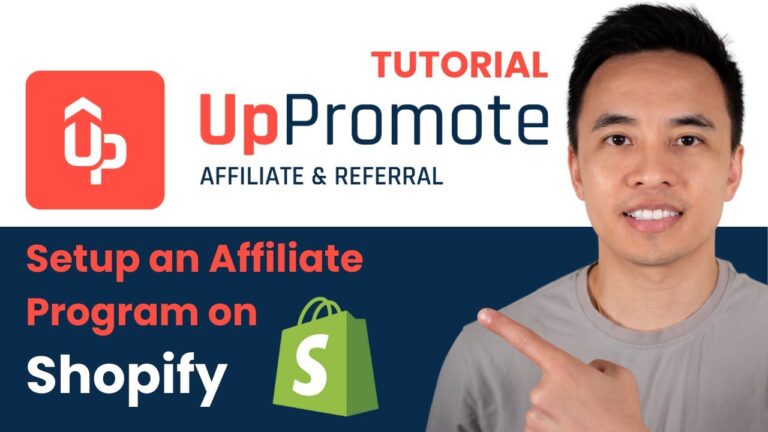Links are important for SEO. Therefore, link building should definitely be part of your SEO strategy. But more importantly, link building should be part of your growth strategy. As it can help you generate more traffic and attract new audiences to your website. Do make sure to stay away from bad practices. Tempting as these may be, they will only hurt your rankings. In this post, we’ll discuss the 6 steps in creating a successful link building strategy. A strategy that will get you proper links and the right audience to your website.
Link building as part of your growth strategy
Essentially, link building boils down to getting other websites to link to your page. When done right, and from a holistic SEO perspective, these links can help your pages rank higher in Google’s search results. However, that’s not the only thing these links do:
A good link, first and foremost, drives traffic to your site.
Good links will help in getting more (referral) traffic to your site. When you develop your link building strategy try to keep in mind that links were invented to send readers from the page they’re currently viewing to other pages they may enjoy as well. That’s why you should use link building as a strategy to reach the right audience and focus on getting links from sites that will actually generate traffic to your own site.
The 6 steps of a successful link building strategy
1. Get to know your audience
If you want to attract more people to your website, you need to know two things: who your audience is right now and what your ideal audience looks like. This will help you keep and expand your current audience and reach new audiences that are interested in what you have to offer. Do some research to get to know your audience. This will not only help you understand them better, it also makes it possible to determine who your desired audience is and if you’re reaching them right now.
To give an example: at Yoast, we started out with an audience that consisted mainly of web developers. However, we wanted to broaden our audience to a more general group of WordPress users (whilst keeping our initial audience). So we adapted our content to this wider group of people. But in order to reach our new audience, we also needed to get links from other websites where these WordPress users could be found.
2. Make a list of sites that appeal to your audience
When you know who your desired audience is, it’s time to make a list of websites that can help you reach them. Find the websites that already appeal to this audience. Links from these websites can help you reach those people that might be interested in your website, but don’t know about it yet.
Note that you don’t want a link from every website there is. A link from a spammy website or a website that has absolutely nothing to do with your niche is not valuable at all. In some cases, it can even backfire and hurt your rankings. Stay away from spammy websites, paying for your links and other link building DON’Ts. Link building isn’t just a trick. Getting these links should feel like a normal marketing effort and part of a holistic SEO approach.
3. Write great content
In order to get other websites to link to your content, you need to have content that actually makes them want to link to your page. Which means that you need to create quality content. I know, it’s easier said than done. But think about what will appeal to your audience, what they want to know and what unique point of view you have to offer. If you sell products or services, don’t just write about why it’s so awesome and that they should definitely buy it. Create content that answers a question that your audience has, or solves a problem they’re facing. Provide them with the information they’re looking for and you’ll not only build trust, but you’ll also get more links to your page as other websites will see the value of your content.
Additionally, you need to consider the readability of your content. Make sure your pages and articles are well structured and nicely written. If you need some more guidance when it comes to creating great content, we have lots of blog posts on content SEO and even an SEO copywriting training course.
4. Match content to websites
When you’re happy with the content you’ve written, it’s time to dive into the list of websites you’ve created during the 2nd step. Which websites will be likely to link to the content that you’ve created? You may feel the urge to just send everything that you’ve created to every site on your list, but this will probably hurt your chances of anyone linking to your content. People don’t have time to read 5 blog posts and decide which one they like, plus you may come across as spammy.
Choose wisely and make an effort to find those websites that fit the specific topic of your blog post or page. These websites will probably be more willing to link, as your blog post fits their content. More importantly, visitors that will come to your website following that link will really be interested in your content (making chances of conversion and recurring visits much higher). Also good to know: if you have a long tail keyword approach (writing about small and niche subjects) the number of websites that will be a good fit will be small. This isn’t necessarily a bad thing, as very specific content can also mean that these few websites are more willing to link to your content.
5. Reach out
After deciding which website(s) you want to contact, it’s time to reach out to them. You can send an email, but social media like Twitter are also a great way to contact people. To increase your chances of getting that backlink, you should know the website and the audience they cater to. This helps you reach out in a personal way, which you want to do. Never send out automated emails or direct messages. Send them a polite email in which you tell them about your content and request them to place a link to your content. Please note that often, you will not get a reply at all.
To improve your chances of getting a link to your page, you need to explain why your content is unique. Trying to get a link for a blog post that is very basic and could’ve been written by anyone, is less likely to succeed than when you provide unique content. Content that people can only find on your website. That being said, don’t make your email too long, as this will result in people not reading it at all.
6. Use social media!
Reaching out to specific people or websites is one way to get links to your content. Another great way to get links, and reach new audiences at the same time, is by using social media. Make sure you share your new content through social platforms like Twitter. Perhaps even send some tweets to specific people who may like your article. Facebook is also a great way to get exposure for your articles, it also gives you the option to promote your content and reach new people. When people like, share and talk about your content on social media, you’re bound to receive some more links as well.
Link building for eCommerce sites
If you have an eCommerce site, link building comes with its own set of challenges. Most websites aren’t that excited about linking to a page that sells products. That’s why you need to create content that’s not focused on selling your product. Focus your content on helping your
audience with anything related to your product. Answer their questions, show your expertise on the subject and create content that’s really interesting for your audience.
If you sell lawnmowers, write articles on topics like ‘How to get your garden ready for the summer’ where you actually discuss lots more than mowing the lawn. Or if you sell furniture, write an article on the latest trends in interior design. This type of content is a lot more shareable for other people outside your company. Which will increase your chances of getting relevant links.
Reach out to your network
An easy way to get a few backlinks to your website is by contacting your business partners. Maybe one of your blogs is interesting for them to link to. Or maybe you can even write a guest blog for their website. It can be easier to contact people that you’re in business with. Just make sure that the backlink is relevant and doesn’t feel forced. Like we said before, link building should always feel natural.
Link building for bloggers
Link building for bloggers can be hard. Especially when you’re just starting out. But it can help you grow your following and meet other bloggers that can help you. Instead of emailing someone and asking them for a link, you can also join a group on Facebook or start guest blogging.
Facebook Groups
Do your hands get sweaty by the idea of having to email others to ask for links? Fear not! Luckily, there are a lot of Facebook Groups where you can meet and reach out to other bloggers. Look around for groups on whatever topics you write about, from SEO and digital marketing to bullet journals. Join a few that seem interesting to you. You can join in on the conversation and share your link where this seems fitting. Just make sure not to come across as spammy. And when another blogger posts that they’re writing on a blog post, you can drop your link in the comments. With a bit of luck, you’ll be featured in their blog post.
Guest blogging
Another option to get links to your website is through guest blogging. Often enough, blogs are looking for input from fellow bloggers and in return will let you link to your own content. You’ll not only get a link to your page from a relevant website. You’ll also introduce yourself to the readers of that particular blog. Visit your favorite blogs, or blogs that are similar to yours, and check to see if they’re open to guest submissions. They’ll usually mention this on their contact or collaboration page.
Conclusion: link building is a growth strategy
A successful link building strategy should always be aimed to bring a new, aspired audience to your website. A (welcome) side effect will then be a higher ranking in Google. As long as you consider link building as a way to reach out to other sites in order to get more visitors from that site, you’re doing it the ‘right’ way. If you want to learn more about link building strategies and other essential SEO skills, check out our All-around SEO training.
Read on: 15 advanced link building tactics »
The post A successful link building strategy in 6 easy steps appeared first on Yoast.

